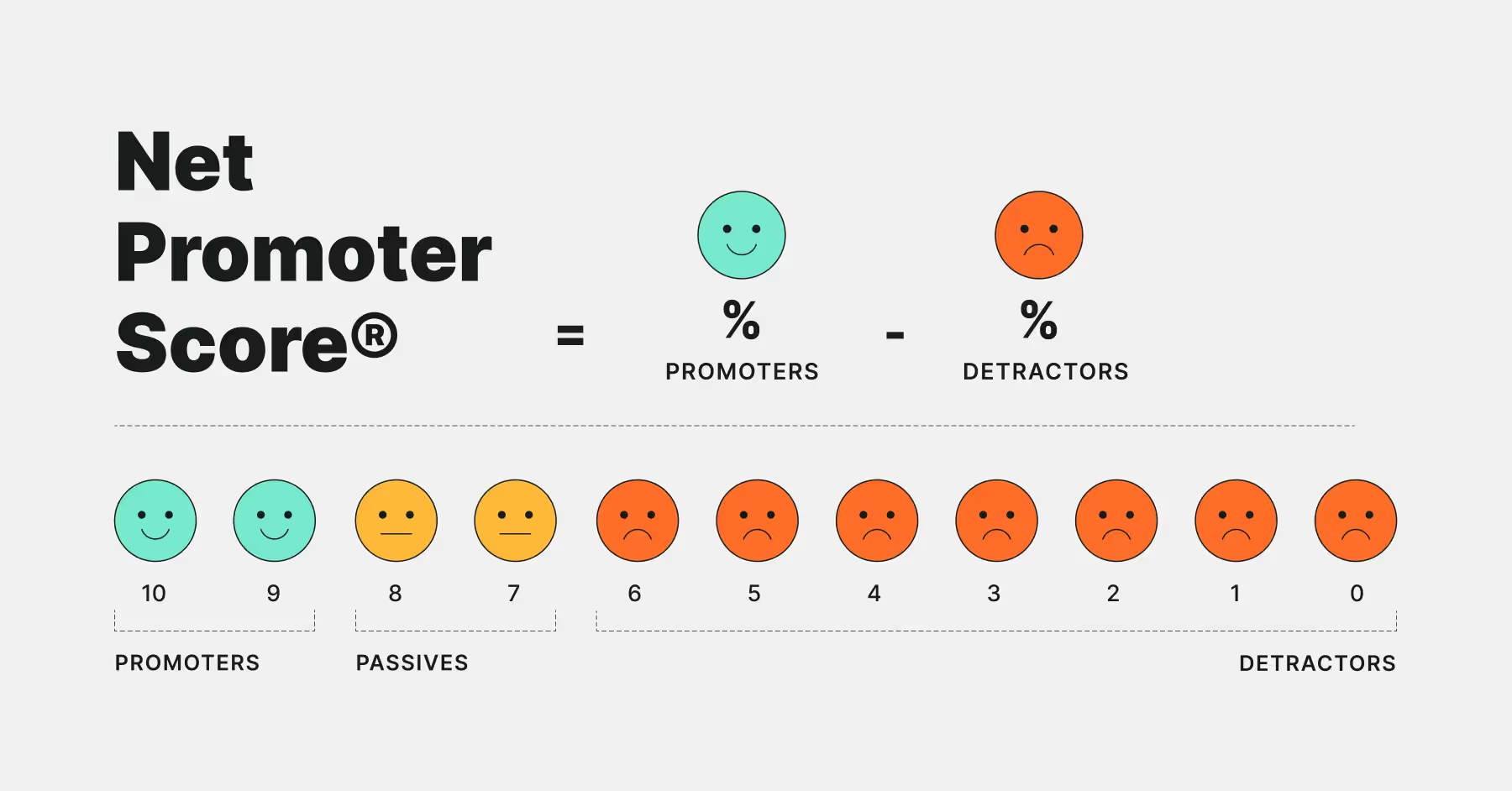Key Takeaways:
1. Digital Customer Experience is about the complete journey your customers have with digital platforms, from initial discovery to post-purchase support.
2. Investing in digital CX is crucial for customer retention, competitive differentiation, cost savings, word-of-mouth marketing, and staying technologically relevant.
3. A successful digital customer experience strategy involves identifying customer needs through data analysis and setting clear, measurable objectives.
4. An effective digital customer experience implementation requires integrating the right technology, providing a consistent omnichannel experience, and utilizing online surveys for feedback.
5. Measure and analyze your digital CX efforts using key metrics like NPS, CSAT, and CES, and collect data through direct and passive feedback methods.
6. Continuous improvement of digital customer experience is driven by feedback loops and a commitment to learning from customer behaviors and preferences.
7. The future of digital customer experience will focus on advanced technologies for predictive personalization, heightened privacy and trust, and increased efficiency through automation.

If you think customer service is just about smiling and saying "please" and "thank you," think again. It's a digital world, and how customers feel online can make or break a business.
Whether you're a small shop owner or a big-time CEO, you're likely missing out if you're not nailing the digital customer experience (CX). But fear not—this article is here to help you understand why it is a game-changer and how you can improve it. By the end, you'll see how a few smart moves can turn browsers into buyers and buyers into loyal fans.
So, let's dive in and decode the digital dilemma, shall we?
What is Digital Customer Experience?
Digital Customer Experience refers to how you interact with websites and apps from start to finish. It is a multifaceted concept that revolves around the touchpoints between you and digital platforms throughout your customer journey.
Digital customer experience encapsulates your interactions at various stages, from discovering products to after-sales support.
Why Investing in Digital CX is Important
Good digital customer experience is key to keeping your business strong. It's about making sure people who visit your website or use your app have a great time. Here's why putting money and effort into digital CX is a smart move.
Happy Customers Stay Longer
When your online service is easy to use, people enjoy it. Happy customers are likely to stay with you and keep buying. They're also more willing to try new things you offer. This loyalty is a big win for your business.
Stand Out from Others
Having a standout digital service sets you apart from the competition. With so many choices, customers often go for the option that gives them the least hassle. If that's you, you'll attract more people.
Save Money
Investing in digital customer experience can also save you money because fixing problems after they happen can cost a lot. But if your digital service is good from the start, you'll have fewer problems and spend less time fixing issues. You'll also have more resources to make things even better.
Use the Power of Word of Mouth
And don't forget, when people like your service, they talk about it. This word-of-mouth can be the best kind of marketing. It's honest and comes from a place of genuine satisfaction, drawing in new customers.
Keep Up with Technology
Things change fast online, and keeping up with the latest technology is also part of good digital CX. This helps you stay competitive and keep your customers happy. It shows that you're moving forward and are ready to meet your customers' needs. This way, you won't lose out to competitors who are quicker to adapt.
In short, putting money into digital customer experience isn't just about the now; it's about setting up your business for future success. It helps you keep customers, stand out, save money, get free marketing, and stay current. It's an investment that pays off in many ways.
Strategy Development
Developing a digital customer experience strategy is crucial for ensuring your organization effectively meets customer expectations. This involves a deep understanding of your customers' needs and setting precise objectives to guide your actions.
Identifying Customer Needs
To craft a digital customer experience strategy, you must first identify your customers' needs. This process typically entails collecting and analyzing data across all digital touchpoints. For instance, reviewing customer interaction data can reveal patterns and preferences that inform your strategy. Online surveys can be especially helpful in this regard, providing direct insights into customer satisfaction and expectations.
- Utilize online surveys to gather customer feedback across various stages of their journey.
- Analyze the survey data to detect common issues or desired features.
Setting Clear Objectives
Once you thoroughly understand customer requirements, the next step is to set clear objectives for your digital CX strategy. Objectives should be Specific, Measurable, Achievable, Relevant, and Time-bound (SMART).
- Define the experience goals for each digital channel, be it your website, mobile app, or social platforms.
- Determine KPIs that will help you measure the success of your efforts, such as Net Promoter Score (NPS) or Customer Satisfaction Score (CSAT).

By focusing on identifying customer needs and setting clear objectives, you lay the groundwork for a successful digital customer experience strategy that will resonate with your audience and meet your business goals.
Implementing Digital Customer Experience
Implementing Digital CX requires a precise strategy to integrate cutting-edge technology and deliver a cohesive omnichannel experience. Your approach must align technology seamlessly with customer needs to foster engagement and satisfaction.
Technology Integration
You must leverage the right technologies to enhance your customer experience (CX). Begin by implementing a robust Customer Relationship Management (CRM) system that consolidates customer data and interactions. It should enable your support team to provide personalized assistance. Incorporate analytics tools to track customer behavior and gain insights for optimizing the digital journey. Furthermore, AI-driven tools can offer predictive analytics, which helps in anticipating customer needs and behavior.
Online Surveys and Digital CX
Online surveys are a valuable tool when it comes to Digital CX. It's a method to collect feedback directly from you to gauge satisfaction levels and understand expectations. You can use the insights to to improve digital customer experiences ensuring your needs are met across all digital channels.
- Key Online Survey Advantages:
- Instant feedback: Obtain real-time insights into your digital experience.
- Customer centricity: Align services and products more closely with your preferences.
- Data-driven decisions: Elevate the customer experience through informed strategy adjustments.
To excel in Digital CX, you must provide a consistent omnichannel experience that is not only accessible but also engaging and secure. The data from online surveys plays an essential role in ensuring all digital interactions are effective and resonate with your customers. Customer engagement across websites, mobile apps, and social media platforms should leave them with a positive perception of the brand, influencing both their loyalty and advocacy.
Remember, a seamless digital experience is paramount. Every touchpoint is an opportunity for brands to understand, engage, and deliver value.
Measurement and Analysis
You need robust measurement and analysis strategies to improve digital customer experience (CX). This involves careful data collection and the use of precise performance metrics.
Data Collection
Your first step in measurement and analysis is to gather data effectively. You should identify your key customer touchpoints and implement tools that allow for the collection of customer feedback. Online surveys have proven to be invaluable in this regard, capturing customer sentiment and specific feedback at various stages of the customer journey.
- Direct Feedback: Deploy surveys after key interactions to gauge immediate customer reactions.
- Passive Feedback: Integrate feedback widgets on your website for ongoing customer opinions.
Performance Metrics
Next, analyze your collected data using key performance metrics. These metrics will help you assess the quality of your customer experience.
- Net Promoter Score (NPS): Measures customer loyalty and the likelihood of referrals.
- Customer Satisfaction (CSAT) Scores: Reflect customer satisfaction with a product or service at specific interaction points.
- Customer Effort Score (CES): Evaluates the ease of customer interaction and problem resolution.
It's important not to rely solely on a single metric, as each provides different insights. Rather, use a combination of these metrics for a comprehensive view of your digital CX performance. You can employ a specialized feedback management tool to make it easier to collect and analyze feedback.
Optimization and Improvement
Enhancing digital customer experience (CX) is pivotal to maintaining competitiveness and ensuring customer satisfaction. Optimization requires a systematic approach to improve digital interaction points, and the improvement is measurable against customer satisfaction metrics.
Feedback Loops
Your digital CX strategy thrives on the incorporation of structured feedback loops. You collect valuable data on user interactions by implementing feedback mechanisms at digital touchpoints. This data should then be analyzed to understand customer behaviors, preferences, and the challenges they face. Incorporate tools like online surveys or comment sections, which allow for direct customer feedback and ensure your improvement efforts are data-driven.
Continuous Learning
Adopt a posture of continuous learning in your digital CX strategy to stay ahead. Learning can be facilitated by using analytics to grasp patterns in customer behaviors and using these insights to predict future needs. For example, your organization can dynamically adapt to customer demands by focusing on six key areas of digital CX, such as channel flexibility and service convenience.
Online Surveys
Use online surveys as a tool to extract pointed information about your customers’ experiences. Ask specific questions that assess the aspects of your digital CX you wish to improve, such as ease of use or the effectiveness of personalization strategies. The data gathered through these surveys is a goldmine for identifying areas of improvement crucial to the digital customer journey.
Trends and Future Outlook
Embracing Digital CX Technologies
In 2024, you can expect to see digital CX technologies continue to revolutionize the customer experience. With artificial intelligence and machine learning advancements, businesses are turning to predictive analytics to anticipate your needs and enhance your journeys across digital channels.
Connectedness remains a central theme. Seamless integration across devices and platforms means your interactions with brands are more fluid and intuitive. Omnichannel communications ensure that no matter where you initiate contact, the experience is consistent and responsive.
Online Surveys: The Pulse of Customer Sentiments
Utilizing online surveys is increasingly critical. They provide direct insights into your preferences and satisfaction levels. Analyzing survey data allows companies to identify improvement areas and tailor services to meet your evolving expectations.

Looking Ahead: Precision and Personalization
Moving forward, expect personalization to reach new heights. Tailored recommendations and customized experiences will become the norm rather than the exception. By leveraging big data, businesses can offer you products and services with pinpoint accuracy, enhancing your engagement and loyalty.
Privacy and trust are growing in importance. As you share more personal data, companies must be transparent and secure in their handling of your information, ensuring compliance with data protection regulations and maintaining your trust.
Efficiency is another key trend. Automation and chatbots are increasingly sophisticated, and capable of resolving your inquiries quickly, freeing up human agents to handle more complex issues.
These developments point towards a future where digital CX is not just a component of your experience—it's central to how you interact with and perceive brands.
Collect Customer Feedback from All Your Digital Touchpoints with Survicate
Digital customer experience (CX) is critical to your company's online engagement. It's the driving force that can determine the success of your interactions with customers. To maintain and enhance these relationships, it's essential to have a deep understanding of what your customers truly need and want.
Survicate offers a powerful yet effortless solution to help you achieve just that. Its user-friendly survey software allows you to collect valuable feedback that sheds light on your customers' experiences. This feedback is more than just information; it's the key to refining your digital strategy and delivering a customer experience that resonates on a personal level.
Ready to elevate your digital CX? Embark on this crucial journey with Survicate. Discover the depth of customer insights waiting to be explored. Start your free 10-day trial today and gain access to all the Business Plan features. Try Survicate now and begin transforming customer insights into actionable growth.











.webp)
.webp)


.svg)

.svg)



